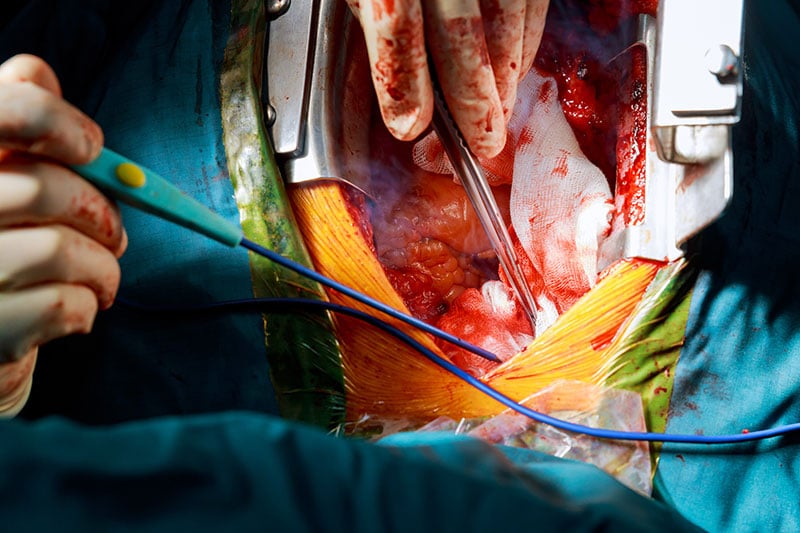Regarded as a common, minimally-invasive heart procedure, Transcatheter Aortic Valve Replacement (TAVR) is a procedure to replace a narrowed aortic valve of the heart through the blood vessels. Also called Transcatheter Aortic Valve Implantation (TAVI), the procedure is performed to treat “aortic stenosis” (aortic valve stenosis) in which the heart valve that propels blood from the heart to the rest of the body becomes narrowed. Billing and coding for this cardiac condition can be challenging. Outsourcing billing and coding tasks to a reputable physician billing company is a great option for cardiologists to document TAVR and get reimbursed on-time.
Why Is TAVR Performed?
Transcatheter aortic valve replacement (TAVR) is performed to replace the aortic valve in people with aortic valve stenosis. Aortic stenosis can cause symptoms like chest pain, fainting, fatigue, leg swelling and shortness of breath. It may also lead to heart failure and sudden cardiac death. TAVR may be an option for people who – have aortic stenosis (that causes signs and symptoms), have an intermediate or high risk of complications from surgical aortic valve replacement, have an existing biological tissue valve (but it isn’t working well anymore) and who can’t undergo open-heart surgery. Potential risks of transcatheter aortic valve replacement (TAVR) may include – severe bleeding, stroke, blood vessel complications, heart rhythm problems (arrhythmias), problems with the replacement valve (such as the valve slipping out of place or leaking), infection, or even death.
What Does the TAVR Procedure Involve?
Usually, valve replacement involves an open-heart procedure with a “sternotomy”, in which the chest is surgically opened for the procedure. The TAVR or TAVI procedures can be performed by making very small openings that leave all the chest bones in place. There are two different approaches for TAVR procedure. The primary approach – Transfemoral approach – which involves entering through the femoral artery (large artery in the groin) – does not require a surgical incision in the chest. Another approach is – Transapical approach – a minimally-surgical procedure in which a small incision is made in the chest area and entering through a large artery in the chest or through the tip of the left ventricle (the apex). Physicians may sometimes use other approaches to access the heart. A hollow tube (catheter) is inserted through the access point. Advanced imaging techniques may be used to guide the catheter through the blood vessel, to the heart and into the aortic valve. Once the new valve is positioned, a balloon on the catheter’s tip is inflated to expand the replacement valve into the appropriate position. When the valve is securely placed, the catheter is removed.
After undergoing the procedure, patients may need to spend the night in the intensive care unit for monitoring. In general cases, patients will need to spend about two to five days recovering in the hospital. Physicians may prescribe certain medications after the procedure. Regular follow-up appointments with the physician after TAVR will help identify new or worsening signs or symptoms. Transcatheter aortic valve replacement can cause infections. Most bacteria that cause heart valve infections come from the bacteria in the mouth. Therefore, maintaining adequate dental hygiene (including routine dental cleanings) can help prevent these infections. Physicians may recommend consuming medications before certain dental procedures to prevent the occurrence of infections.
TAVR Medical Coding
TAVR is covered for the treatment of symptomatic aortic valve stenosis. In 2012, CMS had released a National Coverage Decision (NCD) which provides details of the qualifications of the physicians who perform TAVR and the patients who benefit from the procedure. If adopting TAVR program for the first time or experienced in the technique, it is critical for the facility and physicians to meet certain requirements –
- The facility should use FDA-approved supplies and instruments to perform the procedure
- The patient undergoing the procedure must be under the care of a multi-disciplinary heart team preoperatively and postoperatively
- IVR cardiologists and cardiac surgeons must jointly participate in the intra-operative technical aspects of TAVR
- Hospitals must perform at least 50 TAVRs and more than 300 percutaneous coronary interventions per year
Applicable Medical Codes
Cardiology medical billing and coding involves using the relevant CPT codes and the ICD-10 codes on the medical claims submitted to health insurers for reimbursement. A professional medical coding company will provide the services of experienced medical coders who are up to date with the changing coding regulations and guidelines for the cardiology specialty.
CPT Codes
- 33361 Transcatheter aortic valve replacement (TAVR/TAVI) with prosthetic valve; percutaneous femoral artery approach
- 33362 Transcatheter aortic valve replacement (TAVR/TAVI) with prosthetic valve; open femoral artery approach
- 33363 Transcatheter aortic valve replacement (TAVR/TAVI) with prosthetic valve; open axillary artery approach
- 33364 Transcatheter aortic valve replacement (TAVR/TAVI) with prosthetic valve; open iliac artery approach
- 33365 Transcatheter aortic valve replacement (TAVR/TAVI) with prosthetic valve; transaortic approach (e.g.,median sternotomy, mediastinotomy)
- 33366 Transcatheter aortic valve replacement (TAVR/TAVI) with prosthetic valve; transapical exposure
- 33367 Transcatheter aortic valve replacement (TAVR/TAVI) with prosthetic valve; cardiopulmonary bypass support with percutaneous peripheral arterial and venous cannulation (e.g., femoral vessels)
- 33368 Transcatheter aortic valve replacement (TAVR/TAVI) with prosthetic valve; cardiopulmonary bypass support with open peripheral arterial and venous cannulation (e.g., femoral, iliac, axillary vessels)
- 33369 Transcatheter aortic valve replacement (TAVR/TAVI) with prosthetic valve; cardiopulmonary bypass support with central arterial and venous cannulation (e.g., aorta, right atrium, pulmonary artery)
Diagnosis Code
- Z00.6 Encounter for examination for normal comparison and control in clinical research program
ICD Procedure Codes
- 02RF37H Replacement of aortic valve with autologous tissue substitute, transapical, percutaneous approach
- 02RF37Z Replacement of aortic valve with autologous tissue substitute, percutaneous approach
- 02RF38H Replacement of aortic valve with zooplastic tissue, transapical, percutaneous approach
- 02RF38Z Replacement of aortic valve with zooplastic tissue, percutaneous approach
- 02RF3JH Replacement of aortic valve with synthetic substitute, transapical, percutaneous approach
- 02RF3JZ Replacement of aortic valve with synthetic substitute, percutaneous approach
- 02RF3KH Replacement of aortic valve with nonautologous tissue substitute, transapical, percutaneous approach
- 02RF3KZ Replacement of aortic valve with nonautologous tissue substitute, percutaneous approach
Preventing cardiac disorders requires incorporating heart-healthy lifestyle changes like – consuming a healthy and nutritious diet, maintaining a healthy body weight, getting involved in regular physical activity and managing stress. Cardiology medical billing and coding can be quite challenging for cardiologists and their office team. Outsourcing medical billing and coding tasks is a practical option for physicians to ensure accurate clinical documentation for this heart valve-disorder.




